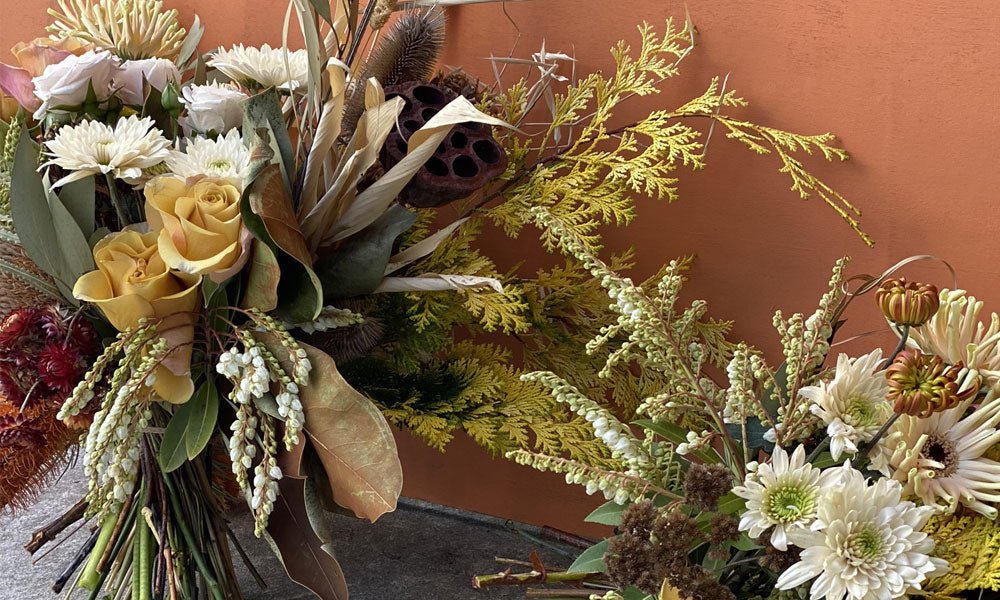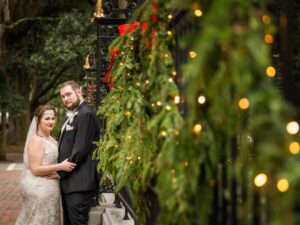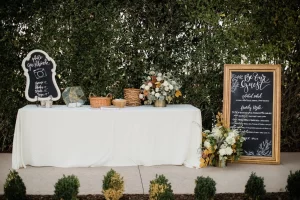The 5 Most Popular Trends in Wedding Flowers

Weddings have always been all about flowers. They are not merely about the way to make a space look pretty, but they create the atmosphere, they embody feelings, and give a reflection of the personality of a couple. The light pastels are dreamy and romantic, and the vivid colors provide a dynamic effect. Because of this, it is not surprising that the trends of flowers change every year depending on fashion, design, and culture.
Then why do you even care about what is trending? Quite simply, trends open the gate to new ideas. They do not need to replace personal touches, as they have the potential to inspire you and help you discover more ways to create your own style. With that said, we are going to take a tour of five wedding flower trends that are defining contemporary weddings and how they can be applied to your big day.
The Return of Dried Flowers
Dried flowers have regained a place in the limelight, especially in recent years. Couples adore them, as they last long after the wedding day, they are greener, and they introduce new textures, which fresh flowers are unable to provide.
Naturally, there is the cost to consider. Although there are occasions when dried flowers might be a little bit pricier initially, they are compensated for their durability. The most common ones are pampas grass, lunaria, statice, lavender, and preserved roses.
The key is in the styling. In order not to create a strictly rustic impression, combine them with metallic vases, modern objects of decor, or even mix them with fresh flowers. And after the wedding? Avoid keeping them in the sun and humidity, and you will have a keepsake set that will last for years.
Aggressive Colors and Interesting Palettes
Weddings are no longer about whites and pastels. More couples are leaning towards jewel colors—imagine emerald green, burgundy, mustard, and deep blues. The instant effect of these shades is a very dramatic and contemporary appearance that captures well on camera.
The impact of the colorful boldness is the opposite of the pastels. Instead, there is drama, energy, and personality. These colorful palettes best suit flowers such as dahlias, orchids, ranunculus, anthuriums, and garden roses.
That said, balance matters. Use bold colors as anchor colors and pair them with neutrals or pastels to make the look natural. This harmony not only uplifts the decoration but also makes all the details, such as bridesmaid dresses, table settings, and background, feel as one.
Seasonal and Local Blooms
The other trend is very powerful; this is the selection of flowers that are in season and grown locally. This is not merely a cost-saving measure, which is an added bonus. Couples like seasonal flowers as they are fresher, more colourful, and environmentally friendly.
It also has the added advantage of helping local growers and reducing the environmental impact of transport. An example is that peonies are bright during spring, dahlias during summer, chrysanthemums during autumn, and amaryllis during winter. Naturally, this varies by location.
To do this best, request your florist to provide you with a seasonal flower calendar. You can also plan together to come up with arrangements that not only match your date but also make the best of what is naturally available. It is a personal, sustainable, and practical decision at the same time.
Seasonal blooms with a local touch are everywhere if you know where to look, and Thanks a bunch florist is one such spot that always seems to deliver.
The Wildflower Aesthetic
The wildflower trend is the best thing for couples who have a relaxed and natural wedding. The style of this look is disorganised, just-picked bouquets and arrangements that bring the outside in.
Some of the most popular flowers for this style are cornflowers, daisies, cosmos, delphiniums, and sweet peas. Wildflowers are inclined towards a rustic nature but can be dressed up. Combining them with roses or green plants gives a garden-style appearance and makes it look both natural and classy.
Bouquets are effective when hand-tied, loose, or cascading. In the case of venues, consider meadow-like setups along the aisle, wildflower jars on the tables, or floral runners in long receptions. It is in its simplicity that it is so appealing—natural, fresh, and new.
Floral Structures and Installations
Lastly, huge floral patterns are enjoying an enormous wave. The installations are dramatic, whether arches, flower walls, hanging floral chandeliers, or aisle meadows.
Their popularity lies in the fact that they change a space immediately. It can be a shabby barn, the rooftop of a city, or a big ballroom—a floral construction creates the image of the ceremony as well as the photographs.
Costs can vary widely. A plain arch can cost several hundred dollars, and entire walls or ceiling jobs, including flowers, can cost thousands. The good thing is that this is a flexible trend. In small venues, small pieces are best, whereas in large places, large structures are most suitable. They are also the favorite of photographers, as they can use them to frame a portrait, enrich a group shot, and make a memorable background.
Conclusion
There are too many beautiful choices, so how do you make one? This does not mean you need to follow all the trends, but rather go after one or two that suit your style, budget, and venue. And yes—you can mix them. Consider bright jewel colors in combination with dried arrangements, or a wildflower garden winding to an arch of flowers.
Simultaneously, the balance will match the timeless aspects to make sure that your wedding pictures do not look outdated decades later. When you see your florist, discuss budget, favorite flowers, availability during your event, and the type of ambiance you want.
In case you need some inspiration, check wedding blogs, Pinterest boards, portfolios of florists, and actual wedding collections. But after all, the trend that makes you feel like yourself, contemporary enough to thrill, old enough to be loved forever, is the best trend.





